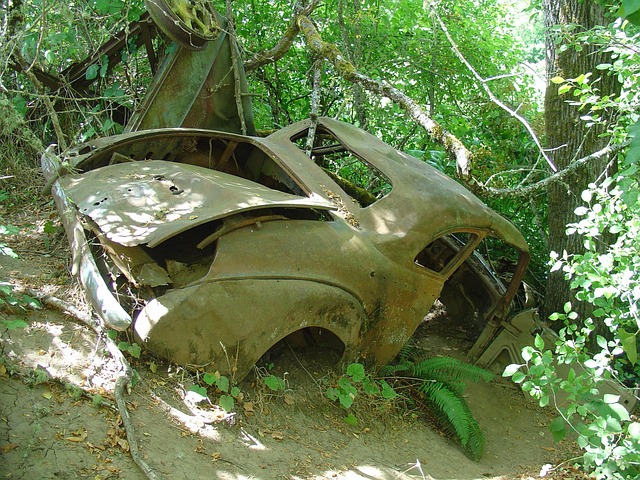Mastering OEM Part Ordering: Quality, Compatibility, & Benefits
OEM-certified replacement parts are crucial for maintaining vehicle performance, safety, and durabil…….
In the dynamic world of manufacturing and automotive industries, the concept of Original Equipment Manufacturer (OEM)-certified replacement parts has emerged as a game-changer. This article aims to delve into the intricacies of OEM-certified parts, exploring their definition, global impact, technological advancements, regulatory landscape, and their overall significance in shaping modern supply chains. By the end of this comprehensive guide, readers will gain valuable insights into how these parts contribute to efficiency, quality, and innovation across various sectors.
Definition:
OEM-certified replacement parts refer to spare components or accessories designed and manufactured to precisely match the specifications of original equipment produced by a vehicle or machinery manufacturer (the OEM). These parts are not generic or aftermarket alternatives but are approved and endorsed by the OEM, ensuring they meet their exacting standards for performance, reliability, and compatibility.
Core Components and Functionality:
Historical Context:
The concept of OEM-certified parts has evolved over time, driven by increasing consumer demand for high-quality, reliable spare components and the need for efficient after-sales support. In the early days, after-market parts dominated the industry, often lacking the precision and performance standards set by OEMs. However, advancements in manufacturing technologies and a growing focus on product quality pushed the development of certified replacement parts. Today, OEM certification is widely recognized as a symbol of excellence and authenticity in the spare parts market.
Significance:
International Influence:
OEM-certified replacement parts have left an indelible mark on global markets, with their presence spanning across continents. The concept has gained traction due to the universal need for high-quality, reliable spare components in various industries, including automotive, agriculture, construction, and aviation.
Regional Trends:
Market Dynamics:
The global OEM-certified parts market is characterized by intense competition and rapid technological advancements. Key players include original equipment manufacturers, specialized aftermarket suppliers, and independent distributors. The market’s growth is driven by factors such as:
| Factors Influencing Market Growth | Impact |
|---|---|
| Increasing Vehicle Ownership | Boosts demand for spare parts across various regions. |
| Stricter Environmental Regulations | Prompts the development of certified eco-friendly parts. |
| Technological Advancements | Enables smarter, more efficient replacement components. |
| Rising Aftermarket Awareness | Encourages consumers to seek high-quality, certified parts. |
Market Dynamics and Investment:
The economic significance of OEM-certified replacement parts cannot be overstated. The market is a vital component of global supply chains, generating substantial revenue and employment opportunities. According to industry reports, the global aftermarket spare parts market, including certified parts, is projected to reach USD 1.5 trillion by 2027, showcasing its immense potential.
Role in Economic Systems:
Recent Developments:
Technological innovations have revolutionized OEM-certified replacement parts, enhancing their performance, functionality, and manufacturing capabilities. Some notable advancements include:
Future Potential:
The future holds immense potential for technological advancements in OEM-certified parts:
Key Policies and Frameworks:
The development and distribution of OEM-certified replacement parts are subject to various policies and regulations, ensuring consumer safety, product quality, and fair trade practices. Some significant global and regional frameworks include:
Regulatory Challenges and Compliance:
Navigating the regulatory landscape presents challenges for manufacturers and suppliers of OEM-certified parts:
Main Issues Faced:
Despite its numerous advantages, OEM-certified replacement parts face several challenges and criticisms:
Proposed Solutions:
To address these challenges:
Case Study 1: Volkswagen’s Genuine Parts Program
Volkswagen, a global automotive giant, has successfully implemented a comprehensive Genuine Parts program that enhances customer satisfaction and supports its after-sales service strategy. The company offers a wide range of OEM-certified replacement parts, ensuring precision fitment and performance. Their focus on quality control and extensive training for technicians ensures that genuine parts are used in all official repairs, maintaining vehicle integrity. This program has been instrumental in building brand loyalty and fostering a positive customer experience.
Key Takeaways:
Case Study 2: Boeing’s MRO Supply Chain Revolution
Boeing, the aviation giant, has revolutionized its Maintenance, Repair, and Overhaul (MRO) supply chain by embracing OEM-certified replacement parts. By partnering with specialized suppliers, Boeing ensures a steady stream of high-quality spare components for aircraft maintenance. This strategy has resulted in reduced downtime, improved safety, and cost savings for airlines worldwide. The efficient supply chain management and rigorous quality standards have set a new benchmark in the aviation industry.
Lessons Learned:
Emerging Trends:
The future of OEM-certified replacement parts is filled with exciting opportunities and trends:
Strategic Considerations:
To capitalize on these trends, OEMs and certified part manufacturers should:
In conclusion, OEM-certified replacement parts have emerged as a powerful force in the global manufacturing and aftermarket industries. Their ability to provide high-quality, reliable components while ensuring brand integrity has transformed the way spare parts are perceived and utilized. From automotive giants to aviation leaders, OEMs are recognizing the value of certifying their replacement parts, fostering innovation, and enhancing customer satisfaction.
As technology advances and global markets evolve, OEM-certified parts will continue to play a pivotal role in shaping the future of manufacturing, transportation, and after-sales services. The industry’s ongoing commitment to quality, efficiency, and sustainability ensures that these parts remain a cornerstone of modern supply chains, empowering businesses and consumers alike.
Q: What sets OEM-certified parts apart from aftermarket alternatives?
A: OEM-certified parts are specifically designed and engineered by the original equipment manufacturer to precisely match their vehicles or machinery. They offer superior quality, performance, and compatibility compared to generic aftermarket parts.
Q: Are OEM-certified parts more expensive than regular spare parts?
A: While some certified parts may carry a premium, not all of them are significantly more expensive. The cost depends on various factors, including the complexity of the part, brand reputation, and market dynamics. Many certified parts offer long-term savings due to enhanced performance and extended vehicle life.
Q: Can I use OEM-certified parts for vehicles that are no longer in production?
A: Yes, many OEMs provide certified parts catalogs for a wide range of models, including older ones. Some manufacturers may also offer limited lifetime warranties or extended coverage for these parts, ensuring their suitability for various vehicle applications.
Q: How do I know if a part is genuinely OEM-certified?
A: Reputable manufacturers and dealers will provide certification stamps, logos, or serial numbers on the parts themselves or in accompanying documentation. Check for genuine certifications and avoid purchasing from unverified sources to ensure authenticity.
Q: What are the environmental benefits of OEM-certified parts?
A: OEMs are increasingly focusing on sustainable practices, leading to the development of eco-friendly certified parts. These may include using recycled materials, minimizing packaging waste, or adopting energy-efficient manufacturing processes, contributing to a greener supply chain.

OEM-certified replacement parts are crucial for maintaining vehicle performance, safety, and durabil…….

OEM-certified replacement parts are essential for maintaining modern vehicles, offering precision fi…….

Using OEM-certified replacement parts after a car accident is vital for maintaining vehicle safety,…….

OEM-certified replacement parts are crucial for modern vehicle repair, offering guaranteed compatibi…….

OEM-certified replacement parts are crucial for maintaining luxury or high-performance vehicles like…….

OEM-certified replacement parts are vital for high-quality, precise collision repairs. Designed to e…….

OEM-certified replacement parts are crucial for auto body restoration and repair, ensuring superior…….

Using OEM-certified replacement parts for modern car repairs ensures quality, compatibility, and lon…….

OEM-certified replacement parts are essential for maintaining and enhancing vehicle performance and…….